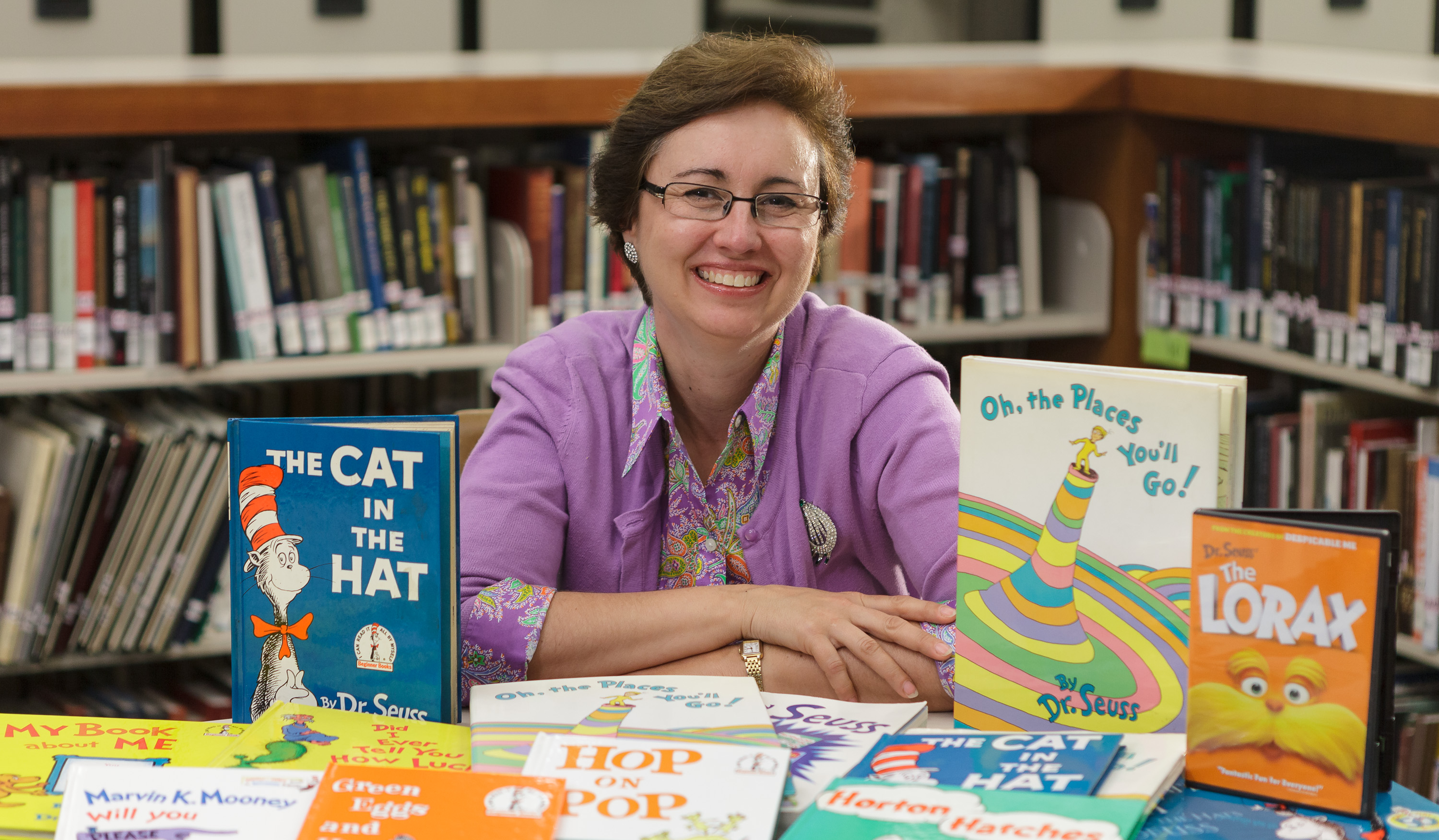 Roxanne Owens, associate professor of elementary reading at DePaul University, discusses how Dr. Seuss’ ‘whimsical, outlandish’ tales keep the joy in reading for children and parents. (DePaul University/Jeff Carrion)
Roxanne Owens, associate professor of elementary reading at DePaul University, discusses how Dr. Seuss’ ‘whimsical, outlandish’ tales keep the joy in reading for children and parents. (DePaul University/Jeff Carrion)CHICAGO
—
Sixty years ago this March, Dr. Seuss put a hat on a cat and revolutionized
children’s literature. “By rearranging simple words into whimsical, outlandish
tales, Seuss made reading fun for children,” said Roxanne Owens, associate
professor of elementary reading at DePaul University. When children find joy in
reading, they’re more likely to practice the skills that develop early
childhood literacy, said Owens.
To mark Seuss’ birthday and Read Across America Day March 2, Owens discusses Seuss’
contributions to literature and offers tips for parents to make reading a joy
for their children.
“If you can get children
to like reading, that can make a huge difference in their education,” said
Owens, who has taught in DePaul’s College of Education for 25 years. “A child
needs to associate reading with warmth, nurturing and success — not being told
what he’s doing wrong,” she said.
Cartoonist and
author Theodor Seuss Geisel, known as Dr. Seuss, knew how to draw young
readers in, said Owens. When “The Cat in the Hat” was published in 1957, most books
in schools were structured, she explained. Standbys like the “Dick and Jane”
books used foundational sight words – “she,” “he” and “it” — but lacked plot
and weren’t particularly exciting to read, according to Owens.
Seuss took those
sight words, the first words children memorize, and turned them into rhyming
classics like “Green Eggs and Ham.”
“They’re very
simple words but they’re so creative and fun that it made children want to read
them,” Owens said. The illustrations in Seuss books also help children develop
visual literacy skills.
“Literacy
includes listening, speaking, reading and writing, and it’s important to
develop those components as a child grows,” said Owens.
Tips for bringing joy into reading
for kids
Finding pleasure
in reading creates motivation, explained Owens. “If children aren’t good at
reading, they for sure don’t want to do it,” said Owens. To avoid this cycle, parents
can follow the PIECE method. “I tell parents that the reading experience should
be pleasant, interesting, engaging and challenging enough,” said Owens. She
offers these tips for keeping the PIECE when reading to children:
- Pleasant: Enjoy being with each other, meaning that reading is your time
together. Keep your focus on that.
- Interesting: Read about something
your child is interested in, whether that’s dogs, planets, cooking or something
else.
- Engaging: Choose a book that will
engage your child’s imagination — use voices, puppets or even homemade props.
- Challenging Enough: Choose a book that is right at or just above your child’s
reading level. You want the child to be able to understand what you’re reading.
Owens notes that
reading together is not a good time to quiz your child or to make it into a
vocabulary lesson. “Reading in and of itself will help your child build skills,”
advised Owens. “Children who read and are read to are constantly exposed to new
words, new ideas, new possibilities. Not to mention correct spelling, grammar
and the elements of a good story,” she said.
Reflecting on Dr.
Seuss and his legacy, Owens calls his books “timeless.” “There
are many lessons to be learned and much wisdom to be gained from the books but
the main reason Dr. Seuss’ books remain popular today is that they are just
darn fun to read,” she said.
###
Source:
Roxanne Owens
rowens@depaul.edu
773-325-4329
Media Contact:
Kristin Mathews
kristin.mathews@depaul.edu
312-241-9856